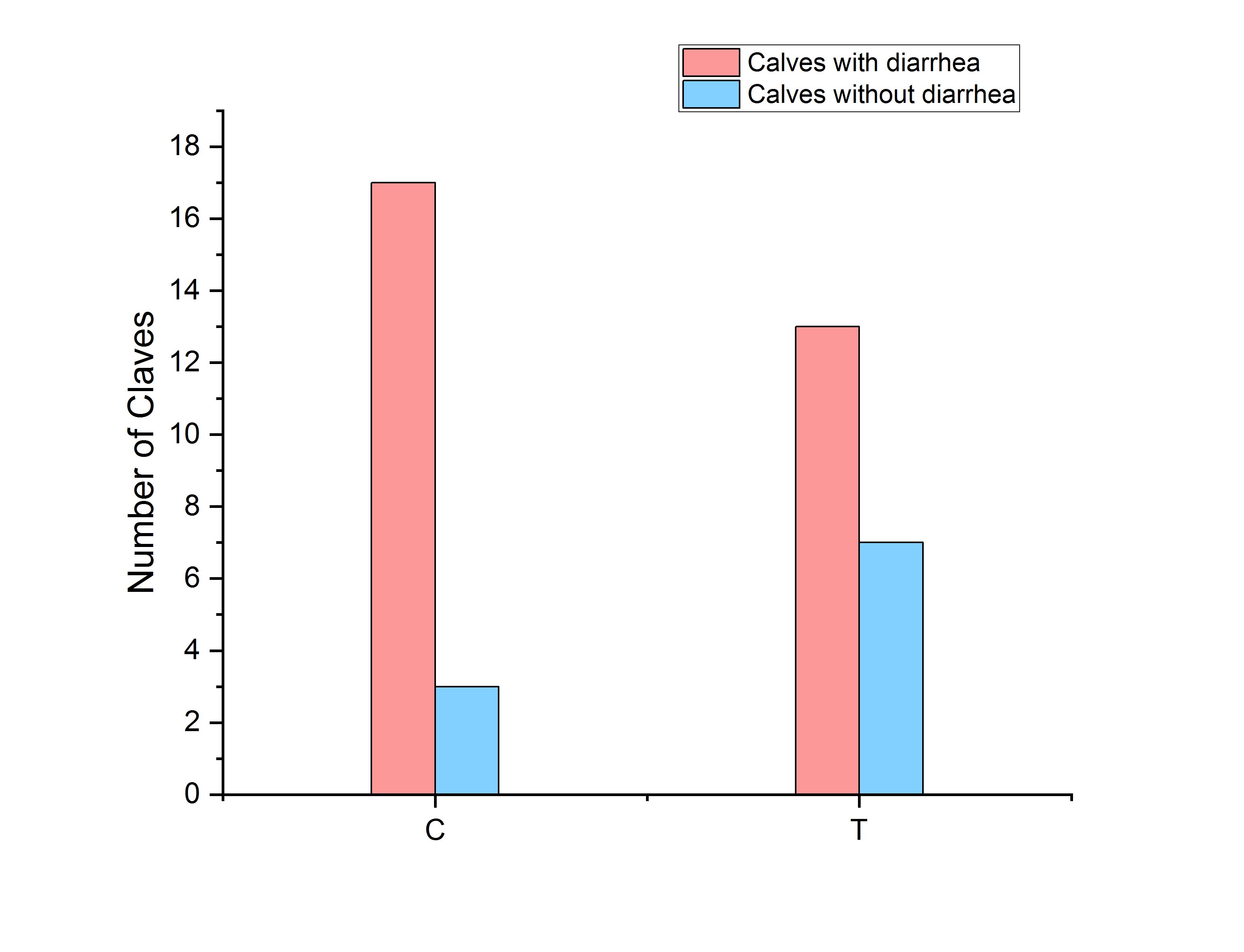Managing Infectious Calf Diarrhoea: Causes, Detection, And Treatment
Abstract
Understanding its origins, spotting the problem, and putting the right treatments in place are all necessary for managing infectious calf diarrhea. Young calves frequently have calf diarrhea, also known as newborn calf diarrhea or calf scours, which can have serious effects if left untreated. Young animals frequently have calf diarrhea, which continues to be a significant global source of lost production and monetary damage for cattle farmers. According to the 2007 National Animal Health Monitoring System report for U.S. dairy, diarrhea was blamed for 50% of unweaned calf fatalities. Numerous infections are known to cause, be a factor in, or influence the growth of calf diarrhea. Conditions and organizational procedures can affect the severity or results of the disease. In current cow-calf operations, calf diarrhea can be difficult. This article aims to: a) offer an improved knowledge of calf diarrhea-related known and prospective bovine enteric pathogens' ecology and pathophysiology; b) describe the benefits and drawbacks of the various diagnostic techniques for locating enteric infections; and c) develop enhanced intervention strategies for calf diarrhea management.
References
Bertoni, E., Barragán, A.A., Bok, M., Vega, C., Martínez, M., Gil, J.F., Cimino, R.O. and Parreño, V., 2021. Assessment of influential factors for scours associated with cryptosporidium sp., rotavirus and coronavirus in calves from argentinean dairy farms. Animals, 11(9), p.2652.
Wei, X., Wang, W., Dong, Z., Cheng, F., Zhou, X., Li, B. and Zhang, J., 2021. Detection of infectious agents causing neonatal calf diarrhea on two large dairy farms in Yangxin County, Shandong Province, China. Frontiers in Veterinary Science, 7, p.589126.
Alimirzaei, M. and Nikkhah, A., 2022. Development of an Aggressive Treatment Protocol against Neonatal Calf Diarrhea: The Last Chance to Rescue Severely Infected Calves. World, 12(4), pp.459-461.
Kim, S., Yu, D.H., Jung, S., Kang, J., Park, K., Chae, J.B., Choi, K.S., Kim, H.C., Park, B.K., Chae, J.S. and Park, J., 2021. Biological Factors Associated with Infectious Diarrhea in Calves. Pakistan Veterinary Journal, 41(4).
Gomez, D.E., Arroyo, L.G., Renaud, D.L., Viel, L. and Weese, J.S., 2021. A multidisciplinary approach to reduce and refine antimicrobial drugs use for diarrhoea in dairy calves. The Veterinary Journal, 274, p.105713.
Caffarena, R.D., Casaux, M.L., Schild, C.O., Fraga, M., Castells, M., Colina, R., Maya, L., Corbellini, L.G., Riet-Correa, F. and Giannitti, F., 2021. Causes of neonatal calf diarrhea and mortality in pasture-based dairy herds in Uruguay: a farm-matched case-control study. Brazilian Journal of Microbiology, 52(2), pp.977-988.
Jang, J.Y., Kim, S., Kwon, M.S., Lee, J., Yu, D.H., Song, R.H., Choi, H.J. and Park, J., 2019. Rotavirus-mediated alteration of gut microbiota and its correlation with physiological characteristics in neonatal calves. Journal of Microbiology, 57, pp.113-121.
Debelo, M., Abdela, H., Tesfaye, A., Tiruneh, A., Mekonnen, G., Asefa, Z. and Moje, N., 2021. Prevalence of bovine rotavirus and coronavirus in neonatal calves in dairy farms of Addis Ababa, Ethiopia: preliminary study. BioMed Research International, 2021.
Chambers, G.P., Kelton, W., Smolenski, G. and Cuttance, E., 2022. Impact of prepartum administration of a vaccine against infectious calf diarrhea on nonspecific colostral immunoglobulin concentrations of dairy cows. Journal of Animal Science, 100(8), p.skac212.
Whon, T.W., Kim, H.S., Shin, N.R., Sung, H., Kim, M.S., Kim, J.Y., Kang, W., Kim, P.S., Hyun, D.W., Seong, H.J. and Sul, W.J., 2021. Calf diarrhea caused by prolonged expansion of autochthonous gut Enterobacteriaceae and their lytic bacteriophages. Msystems, 6(2), pp.e00816-20.
Nikkhah, A. and Alimirzaei, M., 2022. Preventing diarrhea to reduce calf morbidity and mortality: A pragmatic outlook. International J. of Biomed Research. 2 (3).
Dall Agnol, A.M., Lorenzetti, E., Leme, R.A., Ladeia, W.A., Mainardi, R.M., Bernardi, A., Headley, S.A., Freire, R.L., Pereira, U.P., Alfieri, A.F. and Alfieri, A.A., 2021. Severe outbreak of bovine neonatal diarrhea in a dairy calf rearing unit with multifactorial etiology. Brazilian Journal of Microbiology, 52(4), pp.2547-2553.
Youssef, Z.M.A. and Zaitoun, A.M.A., 2022. Epidemiological study of Rotavirus infection in the diarrheic neonatal calves.
Mousa, W.S. and Shama, U.H.A., 2020. Prevalence, antimicrobial resistance and substantial virulence-associated genes of Escherichia coli isolated from colibacillosis in neonatal calves in Egypt. The Journal of Microbiology, Biotechnology and Food Sciences, 9(6), p.1145.
Aydin, O., Ulas, N., Genc, A., Baysal, S., Kandemir, O. and Aktas, M.S., 2022. Investigation of hemogram, oxidative stress, and some inflammatory marker levels in neonatal calves with escherichia coli and coronavirus diarrhea. Microbial Pathogenesis, 173, p.105802.







